Your cart is currently empty!
Tag: Data Center Troubleshooting

Troubleshooting Data Center Performance Issues: A Comprehensive Guide
Data centers are the heart of modern businesses, housing critical IT infrastructure and applications that keep organizations running smoothly. However, even the most well-designed data centers can experience performance issues that can disrupt operations and impact the bottom line. In this guide, we will discuss common data center performance issues and provide troubleshooting tips to help you identify and resolve these issues quickly.1. Network Congestion:
One of the most common performance issues in data centers is network congestion, which occurs when there is too much traffic on the network, causing delays in data transmission. To troubleshoot network congestion, you can use network monitoring tools to identify the source of the congestion and optimize network traffic flow. You can also consider implementing Quality of Service (QoS) policies to prioritize critical traffic and reduce congestion.
2. Storage Bottlenecks:
Another common performance issue in data centers is storage bottlenecks, which occur when the storage system cannot keep up with the demands of the applications. To troubleshoot storage bottlenecks, you can use storage monitoring tools to identify the bottleneck and optimize storage performance by adding more storage capacity, upgrading storage hardware, or implementing storage tiering to prioritize critical data.
3. Server Overload:
Server overload can also impact data center performance, causing delays in processing requests and slowing down applications. To troubleshoot server overload, you can use server monitoring tools to identify overloaded servers and optimize server performance by adding more server resources, load balancing server workloads, or optimizing server configurations.
4. Cooling Issues:
Cooling issues can also impact data center performance, causing overheating and equipment failures. To troubleshoot cooling issues, you can use temperature monitoring tools to identify hot spots in the data center and optimize cooling systems by adding more cooling capacity, rearranging equipment to improve airflow, or implementing hot aisle/cold aisle containment.
5. Power Outages:
Power outages can also disrupt data center operations and impact performance. To troubleshoot power outages, you can use power monitoring tools to identify power issues and optimize power systems by adding backup power sources, implementing power redundancy, or optimizing power distribution.
In conclusion, troubleshooting data center performance issues requires a comprehensive approach that involves identifying the source of the issue, optimizing infrastructure and applications, and implementing best practices to prevent future issues. By following the tips outlined in this guide, you can ensure that your data center operates at peak performance and meets the demands of your business.
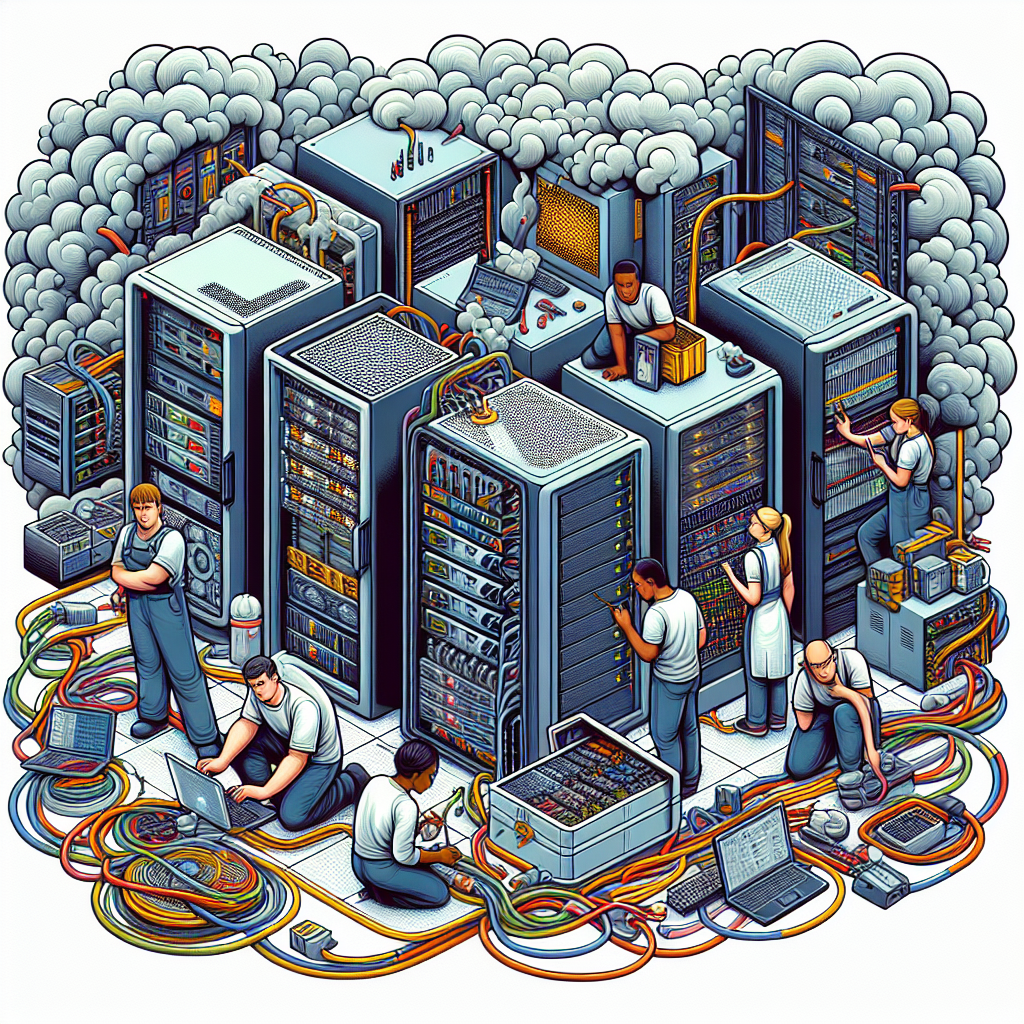
Data Center Hardware Failures: Troubleshooting and Recovery
Data centers are the backbone of modern technology, housing the hardware and infrastructure that support the storage, processing, and distribution of data. However, like any other complex system, data center hardware can experience failures that can disrupt operations and lead to data loss. When these failures occur, it is crucial for data center administrators to quickly troubleshoot and recover from them to minimize downtime and prevent further damage.There are several common hardware failures that can occur in a data center, including power supply failures, CPU overheating, memory errors, and disk drive failures. When a hardware failure occurs, the first step is to identify the source of the problem. This can usually be done by monitoring system logs and error messages, as well as conducting diagnostic tests on the affected hardware.
Once the source of the failure has been identified, the next step is to troubleshoot the issue and determine the best course of action for recovery. In some cases, the problem may be resolved by simply restarting the affected hardware or replacing a faulty component. In other cases, more extensive troubleshooting may be required, such as updating firmware or drivers, reconfiguring hardware settings, or performing a system restore.
If troubleshooting efforts are unsuccessful, data center administrators may need to initiate a recovery plan to restore operations and prevent data loss. This may involve implementing disaster recovery strategies, such as failover systems or data replication, to ensure that critical data and applications are still accessible in the event of a hardware failure.
In some cases, data center administrators may need to engage with hardware vendors or third-party service providers to repair or replace faulty hardware components. It is important to have service level agreements in place with these vendors to ensure prompt response times and minimize downtime.
Preventive maintenance is also key to minimizing the risk of hardware failures in a data center. Regularly monitoring hardware performance, conducting routine maintenance tasks, and implementing proper cooling and power management strategies can help prevent hardware failures before they occur.
In conclusion, data center hardware failures can be disruptive and costly, but with proper troubleshooting and recovery strategies in place, data center administrators can quickly resolve issues and minimize downtime. By implementing preventive maintenance practices and having a solid disaster recovery plan in place, data center administrators can ensure that their hardware infrastructure remains reliable and resilient in the face of potential failures.

Proactive Approaches to Data Center Troubleshooting
Data centers are the heart of any organization’s IT infrastructure, housing critical hardware, software, and data that keep the business running smoothly. However, even the most well-designed data center can experience issues that can disrupt operations and lead to costly downtime. That’s why it’s essential to take a proactive approach to data center troubleshooting to identify and address potential problems before they escalate.One of the key components of proactive data center troubleshooting is monitoring. By constantly monitoring the performance and health of your data center components, you can quickly identify any anomalies or potential issues that may arise. This can be done through the use of monitoring software that tracks metrics such as temperature, power consumption, network traffic, and server performance. By setting up alerts for when certain thresholds are reached, you can be notified of potential issues before they impact operations.
Regular maintenance is another crucial aspect of proactive data center troubleshooting. By regularly inspecting and servicing your data center equipment, you can identify and address any potential issues before they cause a major problem. This includes tasks such as cleaning server racks, checking for loose cables, and updating firmware and software. By staying on top of maintenance tasks, you can prevent issues from arising and ensure that your data center operates smoothly.
In addition to monitoring and maintenance, having a comprehensive disaster recovery plan in place is essential for proactive data center troubleshooting. By having a plan in place for how to respond to various types of disasters, such as power outages, equipment failures, or natural disasters, you can minimize downtime and ensure that your data center can quickly recover from any unexpected events. This includes having backups of critical data and systems, as well as a strategy for quickly restoring operations in the event of a disaster.
Finally, having a skilled and knowledgeable IT team is essential for proactive data center troubleshooting. By having staff who are trained in data center operations and troubleshooting, you can quickly address any issues that arise and prevent them from escalating. This includes providing regular training and professional development opportunities for your IT team to ensure that they have the skills and knowledge needed to effectively manage your data center.
In conclusion, taking a proactive approach to data center troubleshooting is essential for ensuring the smooth operation of your organization’s IT infrastructure. By monitoring performance, conducting regular maintenance, having a disaster recovery plan in place, and having a skilled IT team, you can identify and address potential issues before they impact operations. By being proactive in your approach to data center troubleshooting, you can minimize downtime, reduce costs, and ensure that your data center operates efficiently and effectively.
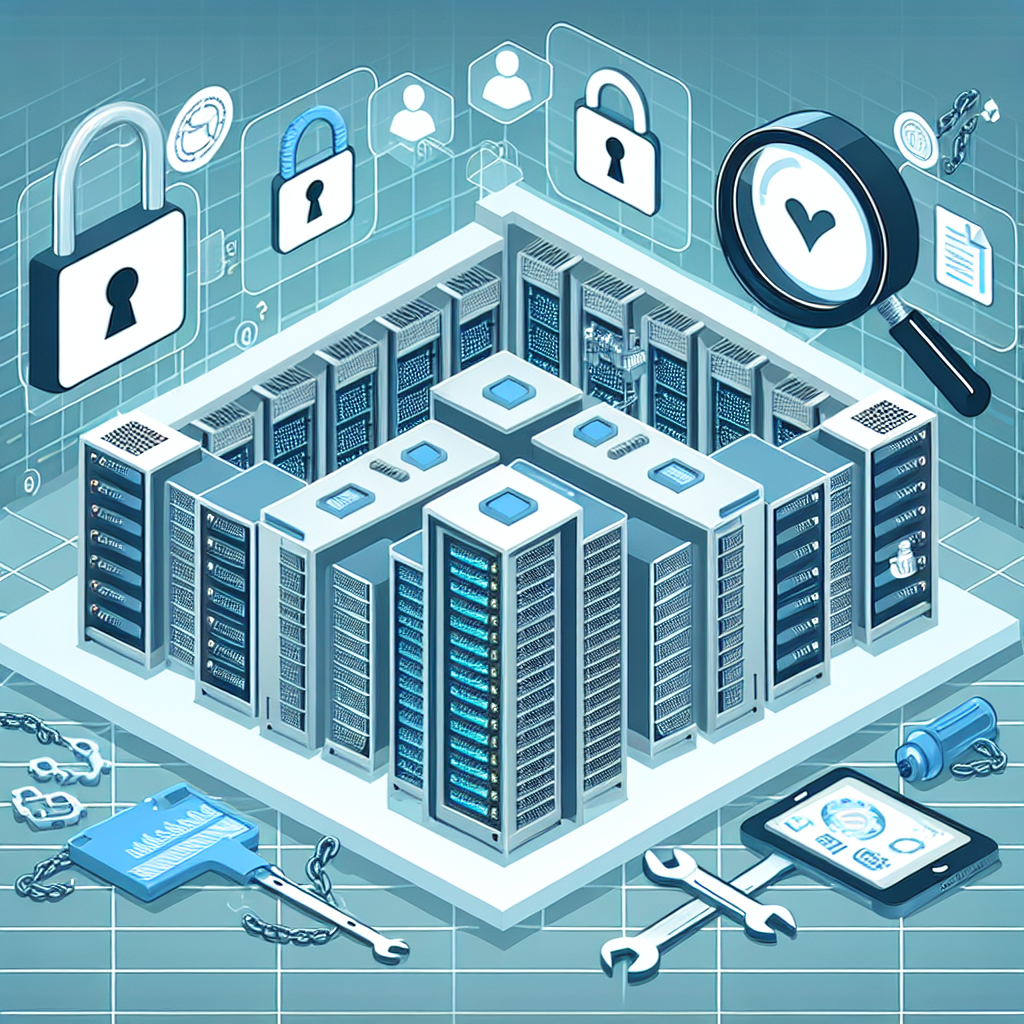
Data Center Security Breaches: How to Detect and Troubleshoot
Data centers are the backbone of modern businesses, housing vast amounts of sensitive data and critical infrastructure. With cyber threats on the rise, it is essential for organizations to prioritize data center security to protect their assets and maintain business continuity. Unfortunately, data center security breaches are becoming increasingly common, with hackers constantly evolving their tactics to bypass traditional security measures.Detecting and troubleshooting data center security breaches is crucial for minimizing the impact of a breach and preventing further damage. Here are some best practices for detecting and troubleshooting data center security breaches:
1. Implement robust monitoring and alerting systems: Monitoring and alerting systems are essential for detecting security breaches in real-time. By monitoring network traffic, system logs, and user activity, organizations can quickly identify unusual behavior and potential security threats. Automated alerts can notify IT teams of suspicious activity, allowing them to respond promptly and mitigate the breach.
2. Conduct regular security audits and assessments: Regular security audits and assessments can help organizations identify vulnerabilities and gaps in their data center security posture. By conducting penetration testing, vulnerability scanning, and security assessments, organizations can proactively identify and address potential security risks before they are exploited by hackers.
3. Enable multi-factor authentication: Multi-factor authentication adds an extra layer of security to user accounts, making it more difficult for hackers to gain unauthorized access to sensitive data. By requiring users to provide multiple forms of identification, such as a password and a one-time passcode, organizations can significantly reduce the risk of credential theft and unauthorized access.
4. Implement strong access controls: Limiting access to sensitive data and systems is essential for preventing data center security breaches. By implementing role-based access controls, organizations can restrict access to only those users who need it to perform their job responsibilities. Additionally, implementing least privilege access can help minimize the impact of a security breach by limiting the potential damage that an attacker can cause.
5. Train employees on security best practices: Employee training is crucial for preventing data center security breaches. By educating employees on security best practices, such as how to identify phishing emails, create strong passwords, and secure their devices, organizations can reduce the risk of human error leading to a security breach.
In conclusion, detecting and troubleshooting data center security breaches is essential for maintaining the integrity of an organization’s data and infrastructure. By implementing robust monitoring and alerting systems, conducting regular security audits, enabling multi-factor authentication, implementing strong access controls, and training employees on security best practices, organizations can effectively detect and mitigate security breaches before they cause significant damage. Prioritizing data center security is crucial for protecting sensitive data and maintaining business continuity in the face of evolving cyber threats.
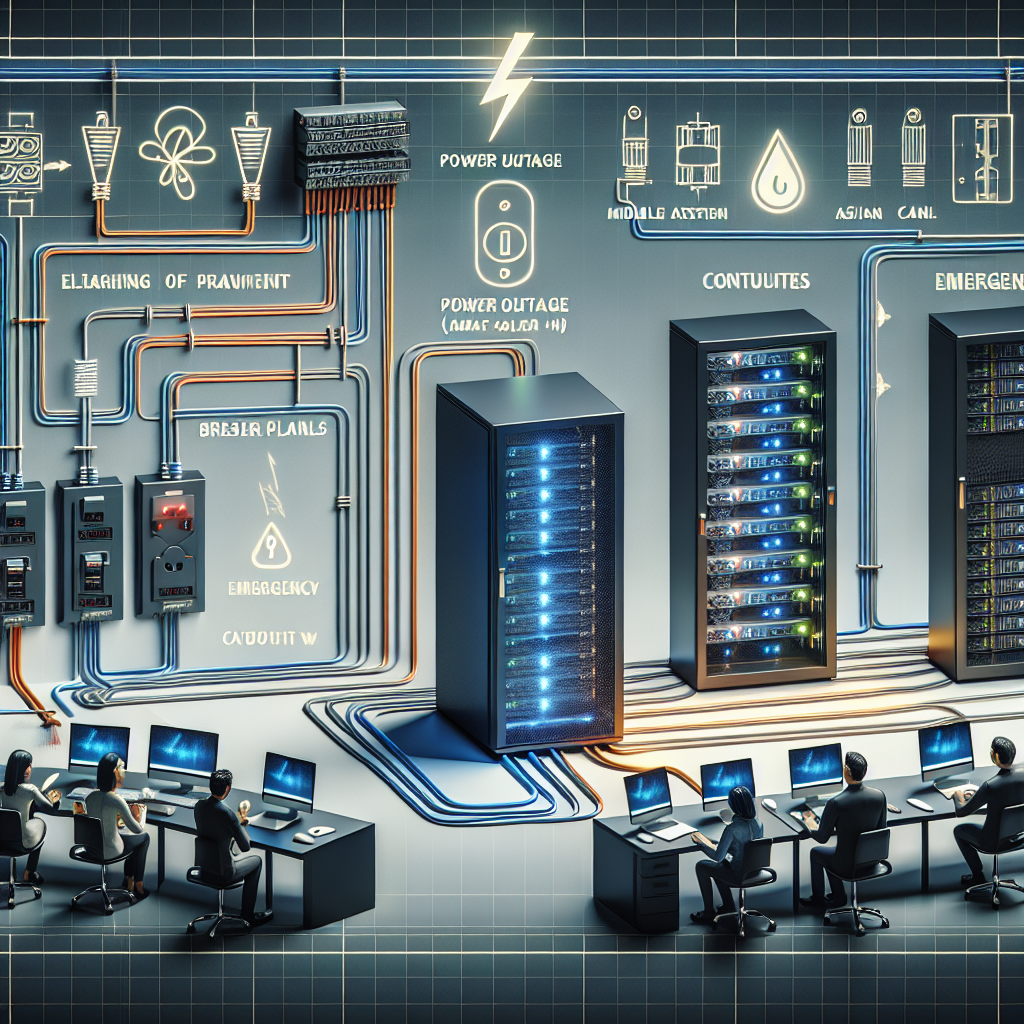
Troubleshooting Data Center Power Outages: Best Practices
Data center power outages are a nightmare for any business. Not only do they disrupt operations, but they can also lead to data loss, equipment damage, and potential financial losses. That’s why it’s crucial for data center managers to have a solid plan in place for troubleshooting power outages. In this article, we’ll discuss some best practices for handling data center power outages.1. Regularly test your backup power systems: One of the most important steps you can take to prevent data center power outages is to regularly test your backup power systems. This includes generators, uninterruptible power supply (UPS) units, and any other backup power sources you have in place. By testing these systems on a regular basis, you can ensure that they are functioning properly and will kick in when needed.
2. Have a comprehensive power outage response plan: It’s crucial to have a detailed power outage response plan in place that outlines the steps to take in the event of a power outage. This plan should include procedures for notifying staff, shutting down non-essential equipment, and troubleshooting the source of the power outage. By having a well-thought-out plan in place, you can minimize downtime and potential damage to your data center.
3. Monitor power usage and capacity: Another key best practice for troubleshooting data center power outages is to regularly monitor power usage and capacity. By keeping a close eye on power consumption, you can identify any potential issues before they lead to a power outage. Additionally, monitoring power capacity can help you ensure that your data center has enough power to support all of your equipment.
4. Use remote monitoring and management tools: Remote monitoring and management tools can be invaluable when it comes to troubleshooting data center power outages. These tools allow data center managers to remotely monitor power usage, identify potential issues, and even perform troubleshooting tasks from anywhere. By leveraging these tools, you can proactively address power-related issues before they lead to a full-blown outage.
5. Implement redundancy and failover systems: To further protect your data center from power outages, consider implementing redundancy and failover systems. This includes redundant power supplies, backup generators, and failover systems that can automatically switch to a secondary power source in the event of an outage. By having these systems in place, you can minimize downtime and ensure that your data center remains operational even in the face of power outages.
In conclusion, data center power outages can have serious consequences for any business. By following these best practices for troubleshooting power outages, you can minimize downtime, protect your equipment, and ensure that your data center remains operational in the face of power-related issues. By regularly testing backup power systems, having a comprehensive response plan, monitoring power usage and capacity, using remote monitoring tools, and implementing redundancy and failover systems, you can be better prepared to handle power outages and keep your data center running smoothly.
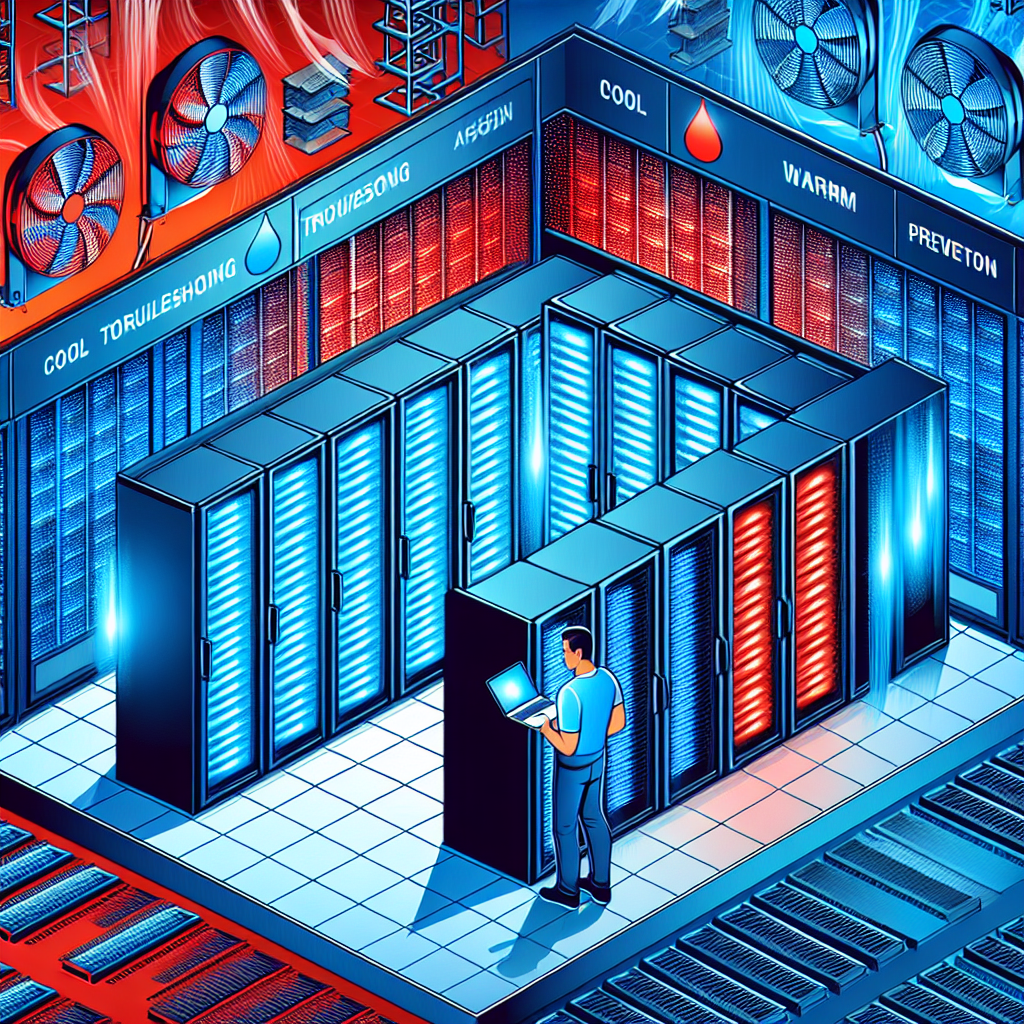
Data Center Cooling Issues: Troubleshooting and Prevention
Data centers are the backbone of modern businesses, housing the servers and networking equipment that keep organizations running smoothly. However, one of the biggest challenges faced by data center operators is keeping these facilities cool. As data center equipment generates a significant amount of heat, proper cooling is essential to prevent overheating and potential equipment failures.There are several common cooling issues that data center operators may encounter, including:
1. Inadequate airflow: Poor airflow can lead to hot spots within the data center, causing equipment to overheat. This can be caused by blocked air vents, improperly positioned equipment, or insufficient cooling capacity.
2. Insufficient cooling capacity: If the cooling system in the data center is not powerful enough to handle the heat generated by the equipment, temperatures can rise to dangerous levels. This can lead to equipment failures and downtime.
3. Cooling system malfunctions: Like any mechanical system, cooling systems can experience malfunctions that can disrupt proper cooling. This can include issues with the HVAC system, cooling fans, or air conditioning units.
To troubleshoot and prevent these cooling issues, data center operators can take the following steps:
1. Conduct regular maintenance: Regular maintenance of the cooling system is essential to ensure it is functioning properly. This includes cleaning air filters, checking for leaks, and inspecting cooling fans.
2. Monitor temperature levels: Installing temperature sensors throughout the data center can help operators monitor temperature levels and identify potential hot spots before they become a problem.
3. Optimize airflow: Properly positioning equipment, ensuring adequate spacing between racks, and keeping air vents clear can help optimize airflow within the data center.
4. Upgrade cooling systems: If the current cooling system is struggling to keep up with the heat load, it may be time to consider upgrading to a more powerful system that can better handle the heat generated by the equipment.
By addressing these common cooling issues and taking proactive measures to prevent them, data center operators can ensure their facilities remain cool and running smoothly. Proper cooling is essential to the longevity and reliability of data center equipment, making it a critical aspect of data center management.

Troubleshooting Data Center Network Problems: Tips and Tricks
Data centers are the backbone of modern businesses, housing vast amounts of critical data and applications. However, maintaining a reliable and efficient network within a data center can be a challenging task. Network problems can lead to downtime, data loss, and ultimately impact the overall performance of a business. Troubleshooting data center network problems requires a systematic approach and a deep understanding of the underlying infrastructure. Here are some tips and tricks to help you effectively troubleshoot data center network problems:1. Identify the problem: The first step in troubleshooting network problems is to identify the root cause. This can be done by monitoring network traffic, analyzing logs, and conducting network tests. Look for patterns or anomalies that could indicate a problem, such as high latency, packet loss, or network congestion.
2. Check physical connections: A common cause of network problems in data centers is faulty or loose physical connections. Make sure all cables are securely plugged in and check for any signs of damage. It’s also important to check the power supply to ensure that all network equipment is receiving power.
3. Verify network configurations: Incorrect network configurations can cause network problems such as routing loops, IP address conflicts, and VLAN mismatches. Verify that all network devices are configured correctly and that they are communicating with each other as expected.
4. Update firmware and software: Outdated firmware and software can lead to network vulnerabilities and performance issues. Make sure to regularly update the firmware and software on all network devices to ensure they are running the latest versions with bug fixes and security patches.
5. Monitor network performance: Use network monitoring tools to track network performance metrics such as bandwidth utilization, packet loss, and latency. This will help you identify any performance bottlenecks and proactively address them before they cause a network outage.
6. Conduct network tests: Performing network tests, such as ping tests or traceroute tests, can help you pinpoint the location of network problems and troubleshoot them more effectively. These tests can also help you determine if the problem is isolated to a specific device or if it is affecting the entire network.
7. Consider network segmentation: Segmenting the network into separate VLANs or subnets can help isolate network problems and prevent them from spreading to other parts of the data center. This can also improve network security and performance by reducing the scope of potential network issues.
8. Consult with network experts: If you are unable to resolve a network problem on your own, don’t hesitate to seek help from network experts or vendors. They can provide valuable insights and expertise to help you troubleshoot complex network issues and ensure the stability of your data center network.
In conclusion, troubleshooting data center network problems requires a combination of technical knowledge, diligent monitoring, and effective communication. By following these tips and tricks, you can effectively identify and resolve network problems in your data center, minimizing downtime and ensuring the reliability of your network infrastructure.
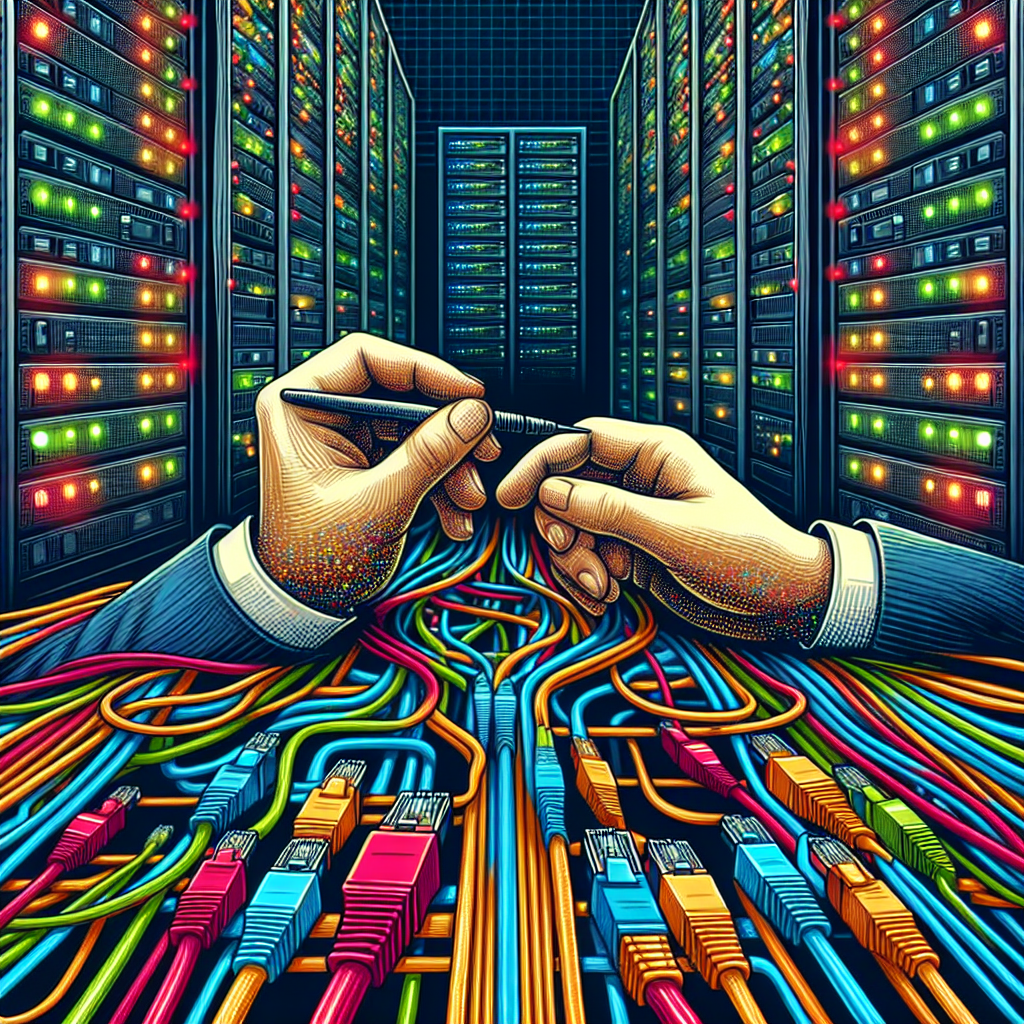
Effective Strategies for Data Center Troubleshooting
Data centers are the heart of any organization’s IT infrastructure, housing and managing critical data and applications. When issues arise in a data center, it can have a significant impact on the business operations. Therefore, it is crucial to have effective strategies in place for troubleshooting and resolving problems quickly and efficiently.Here are some effective strategies for data center troubleshooting:
1. Monitoring and Alerting: Implementing monitoring tools that continuously track the performance and health of the data center infrastructure is essential. These tools can provide real-time alerts when issues arise, allowing IT teams to proactively address problems before they escalate.
2. Root Cause Analysis: When troubleshooting data center issues, it is important to identify the root cause of the problem rather than just addressing the symptoms. Conducting a thorough analysis of the issue can help prevent similar problems from occurring in the future.
3. Documentation: Maintaining detailed documentation of the data center infrastructure, including configurations, network diagrams, and troubleshooting procedures, can help IT teams quickly identify and resolve issues. Having a comprehensive understanding of the data center environment is crucial for effective troubleshooting.
4. Collaboration: Data center troubleshooting often requires collaboration between different IT teams, such as network, storage, and server teams. Encouraging open communication and collaboration can help streamline the troubleshooting process and ensure issues are resolved efficiently.
5. Testing and Validation: Before implementing any changes or fixes in the data center, it is important to test and validate them in a controlled environment. This can help ensure that the solution will not cause any further issues or disruptions to the data center operations.
6. Automation: Implementing automation tools for data center troubleshooting can help reduce manual effort and speed up the resolution process. Automation can also help identify patterns and trends in data center issues, allowing IT teams to proactively address potential problems.
7. Training and Skill Development: Providing regular training and skill development opportunities for IT teams can help improve their troubleshooting capabilities. Keeping up to date with the latest technologies and best practices in data center management is essential for effective troubleshooting.
In conclusion, effective data center troubleshooting requires a combination of monitoring, analysis, collaboration, documentation, testing, automation, and skill development. By implementing these strategies, organizations can minimize downtime, improve data center performance, and ensure the reliability of their IT infrastructure.
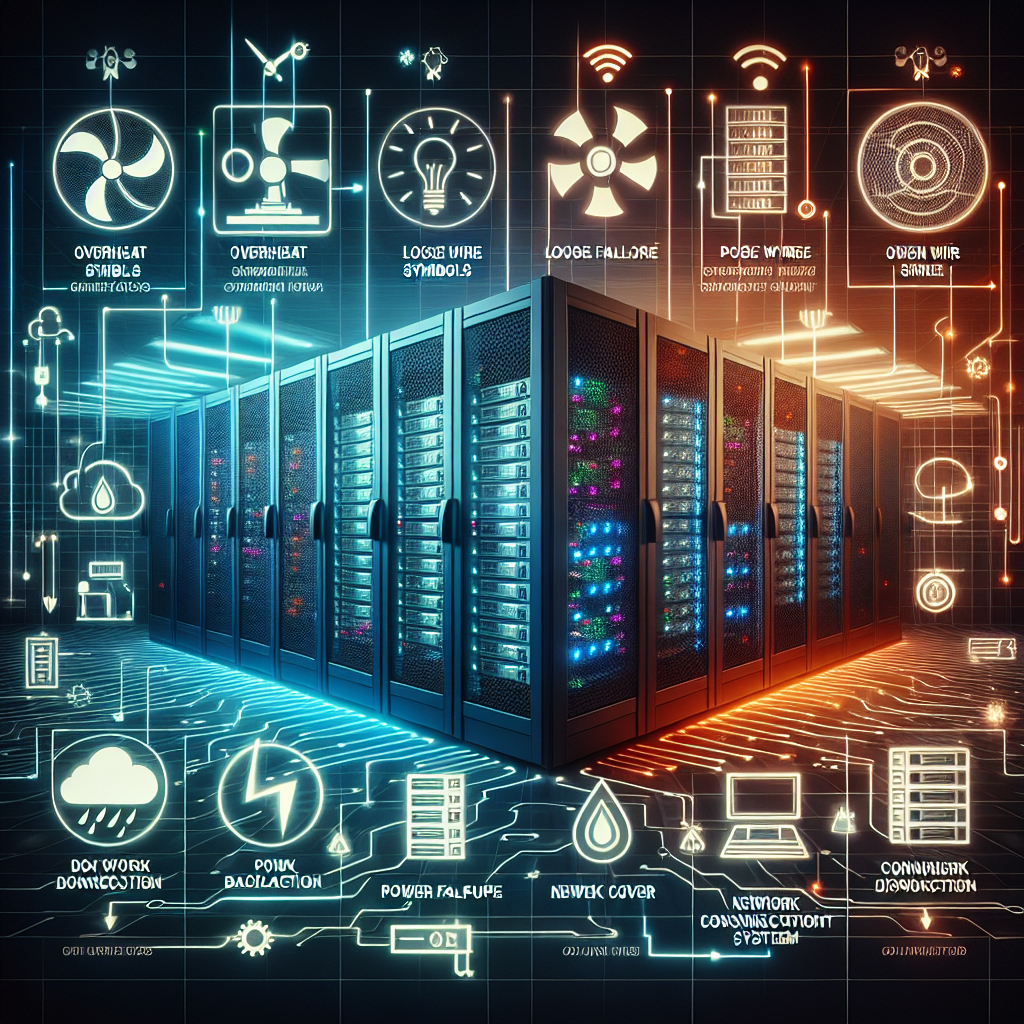
Top 10 Common Data Center Troubleshooting Issues and Solutions
Data centers are the backbone of any organization’s IT infrastructure, serving as the hub for storing, processing, and managing data. However, like any complex system, data centers can encounter issues that can disrupt operations and cause downtime. In this article, we will discuss the top 10 common data center troubleshooting issues and their solutions.1. Power Outages
Power outages are one of the most common issues that data centers face. This can lead to downtime and potential data loss. To address this issue, data centers should have backup power systems in place, such as uninterruptible power supplies (UPS) and generators. Regular maintenance and testing of these systems are also essential to ensure they are functioning properly.
2. Cooling System Failure
Data centers generate a considerable amount of heat due to the high-powered servers and networking equipment. Cooling system failures can lead to overheating, which can damage equipment and cause downtime. Regular maintenance of cooling systems, monitoring temperatures, and having redundancy in place are key solutions to this issue.
3. Network Connectivity Problems
Network connectivity issues can disrupt data center operations and affect access to data and applications. Troubleshooting network connectivity problems involves checking cables, switches, routers, and firewalls for any issues. Monitoring network traffic and performance can help identify and resolve connectivity problems proactively.
4. Hardware Failures
Hardware failures, such as hard drive crashes, memory issues, or CPU failures, can impact data center operations and cause downtime. Regular hardware maintenance, monitoring, and having spare parts on hand can help address hardware failures promptly.
5. Software Glitches
Software glitches, bugs, or compatibility issues can also cause data center problems. Keeping software up to date, applying patches and updates, and monitoring performance can help prevent software-related issues. Having a backup and disaster recovery plan in place can also mitigate the impact of software failures.
6. Security Breaches
Data centers are prime targets for cyberattacks, which can lead to data breaches, data loss, and downtime. Implementing robust security measures, such as firewalls, intrusion detection systems, encryption, and access controls, can help prevent security breaches. Regular security audits and training for staff on cybersecurity best practices are also essential.
7. Storage Capacity Issues
Data centers can quickly run out of storage capacity due to the growing volume of data being generated and stored. Monitoring storage capacity, implementing data deduplication and compression techniques, and scaling storage infrastructure as needed can help address storage capacity issues.
8. Backup and Recovery Failures
Backup and recovery failures can result in data loss and downtime in the event of a disaster. Regularly testing backup and recovery systems, verifying data integrity, and having offsite backups are essential to ensure data can be restored in case of an emergency.
9. Environmental Factors
Environmental factors, such as humidity, dust, and temperature fluctuations, can impact data center operations. Monitoring environmental conditions, maintaining proper ventilation and air filtration, and implementing environmental controls can help mitigate the impact of environmental factors on data center performance.
10. Human Error
Human error is a common cause of data center issues, such as accidental deletion of data, misconfiguration of systems, or improper handling of equipment. Providing training for staff, implementing change management processes, and enforcing best practices can help reduce the risk of human error in data center operations.
In conclusion, data center troubleshooting requires a proactive approach to identify and address potential issues before they escalate into major problems. By implementing best practices, monitoring systems, and having contingency plans in place, data centers can minimize downtime, ensure data integrity, and maintain optimal performance.

Troubleshooting Data Center Security Breaches
Data centers play a crucial role in storing and managing sensitive data for organizations. However, with the increasing number of cyber threats, data center security breaches have become a major concern for businesses. When a security breach occurs, it can have serious consequences, including financial losses, reputational damage, and legal implications. Therefore, it is essential for organizations to have a solid plan in place to troubleshoot and prevent data center security breaches.One of the first steps in troubleshooting a data center security breach is to identify the source of the breach. This involves conducting a thorough investigation to determine how the breach occurred, what data was compromised, and who is responsible. This may involve analyzing log files, conducting forensic analysis, and interviewing staff members who may have been involved.
Once the source of the breach has been identified, the next step is to contain the breach and minimize the damage. This may involve isolating affected systems, changing passwords, and implementing security patches to prevent further unauthorized access. It is also important to notify relevant stakeholders, such as customers and regulatory authorities, about the breach and the steps being taken to address it.
After containing the breach, the next step is to restore systems and data to their pre-breach state. This may involve restoring data from backups, reinstalling software, and implementing additional security measures to prevent future breaches. It is essential to thoroughly test systems and ensure that all vulnerabilities have been addressed before bringing systems back online.
Finally, organizations should conduct a post-mortem analysis to learn from the breach and prevent similar incidents in the future. This may involve reviewing security policies and procedures, implementing additional security controls, and providing training for staff members to raise awareness about security best practices.
In conclusion, data center security breaches can have serious consequences for organizations, but with a proactive approach to troubleshooting and prevention, businesses can minimize the impact of breaches and protect their sensitive data. By following these steps, organizations can strengthen their security posture and ensure the integrity of their data center operations.
